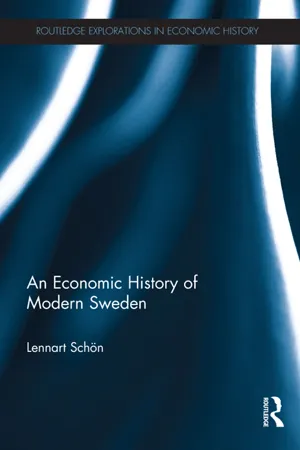History
Market Revolution
The Market Revolution refers to the transformation of the United States economy in the early 19th century, characterized by the shift from agrarian and localized economies to a national market system. This period saw the rise of industrialization, transportation improvements, and the expansion of commercial agriculture, leading to increased production, trade, and economic growth.
Written by Perlego with AI-assistance
Related key terms
Related key terms
1 of 4
Related key terms
1 of 3
3 Key excerpts on "Market Revolution"
- eBook - ePub
Building the American Republic, Volume 1
A Narrative History to 1877
- Harry L. Watson(Author)
- 2018(Publication Date)
- University of Chicago Press(Publisher)
Lucy Larcom and Sarah Bagley lived at the intersection of converging changes in America’s society and economy. Their workplaces were technological marvels that belonged to corporations, an increasingly powerful business structure. They spun slave-grown cotton that came to Lowell on newly constructed canals, steamboats, and railroads. The same carriers took their cloth to consumers, including the slaves who had grown its fiber. New forms of communication, including cheaply printed newspapers and handbills, had lured a woman from Ireland to work in Mrs. Larcom’s boardinghouse. Millions of other immigrants made similar journeys. And finally, the mill owners reinvested their profits in a continual process of capitalist development that made America a world industrial power by 1860.Historians have given the name “Market Revolution” to the interlocking sets of changes that introduced Americans to the “buzzing and hissing and whizzing” of early industrialization. Americans had always bought and sold in far-flung markets, for transatlantic trade had supported the colonies from the start, but geographical barriers had hampered commercial expansion. Historians have also identified the “Transportation Revolution” and the “Communication Revolution,” for improvements in these areas greatly expanded the scope and scale of market activities. They also speak of the “Industrial Revolution,” for machinery transformed both manufacturing and the nature and meaning of work. All these terms are useful for specific developments, but “Market Revolution” seeks to embrace them all by emphasizing the role of expanding markets in driving change throughout the society and the economy.These “revolutions” had far-reaching consequences. When cheap, abundant goods arrived from far away and undersold local products, Americans had to put aside what others could do cheaper, concentrate on making and selling what they did best, and buy their other necessities from those distant, unseen rivals. These were the market forces that sent slaves to Mississippi, cotton and “mill girls” to Lowell, machine-made textiles to every neighborhood, and homespun cloth to oblivion. As the new methods spread, buying and selling intensified, and the importance of markets, prices, cash, and credit rose dramatically. The consequences included western expansion, urban and rural transformation, a new class structure, new shapes and meanings for homes and workplaces, and dramatically new roles for women. - eBook - ePub
- Victoria N Bateman(Author)
- 2015(Publication Date)
- Routledge(Publisher)
1 MARKETS IN HISTORY: A SURVEYAs we have seen, markets are central to the explanations that have been put forward for the sustained economic growth that began with the British Industrial Revolution and continues to the present day. Having great influence over the formation of this market-led view is a particular vision of life in Europe before the Industrial Revolution. The economy is seen as backward commercially and, as a consequence, technologically, leaving little room for growth. Whilst in the modern world people come into contact with the market every day of their lives – through the goods they buy, the daily work they undertake for businesses and the banks that look after their money – people of the past are often seen as having had minimal contact with goods, labour and financial markets. We might not quite all have been living as hermits in wooden huts, subsisting on our own patch of land, but something not far from this is probably a fair depiction of what many people have in mind. This all supposedly changed in the seventeenth and eighteenth centuries, preparing the way for the Industrial Revolution. It is on this understanding of the past that the poor economies of today are told that liberalizing markets will result in them catching up with the rich west. By taking a chronological journey through history from Roman times towards the present day, this chapter questions the historical understanding on which this advice is given. It knits together the economic history of the different periods, helping to identify where and when markets developed. Rather than finding poorly developed markets in history, we will see that waves of integration and disintegration have existed across time. Markets are certainly not a modern invention – they have been present for thousands of years. Taken together with the fact that sustained economic growth is a recent phenomenon, this suggests that whilst markets may be necessary for economic growth, they are certainly not sufficient. - eBook - ePub
- Lennart Schön(Author)
- 2012(Publication Date)
- Routledge(Publisher)
All of these changes were dynamic. They pointed forward, interacted with each other and merged in a cumulative process of growth and transformation whose consequences were yet unforeseeable.Many parts of the late eighteenth-century world experienced changes that were greater and more radical than those in Sweden. Three revolutions altered the course of history. The British colonies of North America revolted and formed the United States in 1776. Europe was shaken by the French Revolution of the 1780s and the wars of subsequent decades that remoulded nations according to new principles. Meanwhile, the pace of the British Industrial Revolution accelerated. The use of coal, steam power and machinery was about to create the first industrial society. The foundation was laid for industrialisation and growth in an expanded world economy.These mega-trends suggest similarities as well as differences with the times we live in. The late twentieth century brought a major upheaval that is variously referred to as the emergence of the service economy, the Third Industrial (electronic) Revolution and the dawn of the information age. Europe underwent a political realignment, and industrialisation spread to East and Southeast Asia, which has become an increasingly independent and dynamic engine of the global economy. The world has again entered a phase of rapid transformation.This book examines the evolution of the Swedish economy over the past two centuries. Focusing on growth and transformation, it strives to provide a long-term perspective on the historical contexts and forces that have shaped twenty-first-century Sweden.Growth and transformation
Growth has been one of the most distinctive economic trends in Sweden during the past 200 years. Although the population has almost quadrupled, inflation-adjusted per capita output and income have risen continuously. Sweden is among the countries that have enjoyed the most rapid growth. Per capita Gross Domestic Product (GDP) has averaged almost 2 per cent annual increases since 1800.
Index pages curate the most relevant extracts from our library of academic textbooks. They’ve been created using an in-house natural language model (NLM), each adding context and meaning to key research topics.
Explore more topic indexes
Explore more topic indexes
1 of 6
Explore more topic indexes
1 of 4


